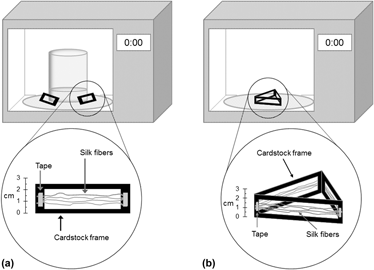Article contents
Mechanical properties of Bombyx mori silkworm silk subjected to microwave radiation
Published online by Cambridge University Press: 09 April 2014
Abstract

Microwave irradiation has the potential to affect the mechanical properties of natural silks. We explored several tensile properties of Bombyx mori silkworm cocoon fibers (yield stress and strain, breaking stress and strain, Young's modulus, toughness) as a function of microwave exposure time; samples were stored in a desiccating environment prior to tensile testing. Microwave radiation did not significantly affect any of these properties. We conclude that silk can be incorporated as a reinforcing fiber—without significant deterioration in properties—into materials that are subjected to microwave processing and/or in-service microwave radiation. Microwave exposure decreased the Weibull modulus of fibers, indicating that fracture becomes less predictable as a result of the exposure. Since microwave exposure affects failure predictability but not the average breaking strength of fibers, silk is best suited for use in composite materials if microwave exposure is likely, so that load can be transferred from weaker to stronger fibers.
- Type
- Articles
- Information
- Copyright
- Copyright © Materials Research Society 2014
References
REFERENCES
- 2
- Cited by


